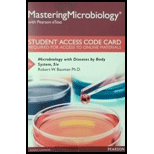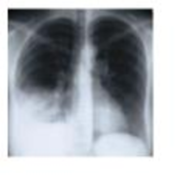
The Stealth Invader

Tim is often seen walking around campus, hanging out at the coffee shop, laughing with his friends, and, as he puts it, “investing time with the ladies.” Tim started smoking in high school and has never tried to kick the habit. He jokes about the “smoker’s cough” that has punctuated his conversations over the summer and start of the fall semester. Recently, the cough has been getting worse, his throat is scratchy, his head hurts, and he is tired all the time. Tim wonders if he has some long-lasting flu, though he hasn’t had a fever. He decides not to waste time with a doctor’s visit, but the cough starts keeping him up at night. In October, after a month of progressively worse coughing, he’s had enough; he heads to the campus clinic right after his morning classes.
The clinic physician notes the persistence and worsening of Tim’s cough and confirms that Tim has no fever. To rule out a bacterial infection, she orders a routine sputum culture (a test of the material coughed up from Tim’s lungs), which comes back negative. Tim is sent home with the advice to quit smoking.
A week later, he’s back, coughing nonstop, short of breath, sweaty, and aching. A different doctor orders a chest X-ray exam and several blood tests. The X-ray film reveals fluid in Tim’s lungs, and real-time PCR confirms an infection with Mycoplasma pneumoniae, which is an atypical Gram-positive bacterium. Regular sputum microscopy doesn't detect this pathogen, which lacks cell walls and doesn’t stain well.
Mycoplasma pneumoniae infects and disrupts the mucous membranes of the lungs, invading and disrupting the epithelium. Pneumonia caused by M. pneumoniae is called “walking pneumonia” because the symptoms are often milder and come and go, making this disease different from streptococcal pneumonia. Most patients get better on their own, but not Tim. Smoke has compromised the lungs’ innate immunity. A course of an antimicrobial drug-azithromycin-clears Tim’s lungs of the bacterium within a week. Tim decides to quit smoking.
- 1. Which Toll-like receptors (TLRs) might have been involved in Tim’s innate immune response to Mycoplasma?
- 2. Why didn’t Tim’s naturally occurring interferons help clear the infection?
- 3. What structures and chemicals normally fend off lung infections?
- 4. Why didn’t Tim’s innate lung defenses operate properly?
Want to see the full answer?
Check out a sample textbook solution
Chapter 15 Solutions
Mastering Microbiology with Pearson eText -- Standalone Access Card -- for Microbiology with Diseases by Body System (5th Edition)
- Which of the following primarily does not cause pneumonia? * Legionella bacteria Molds and dust Mycobacterium and staphylococcus aureus Streptococcus and fungiarrow_forwardThe type of lung infection that could be caused by any of a large group of microbes which usually is a secondary infection of people in nursing homes and ICU's is___. pneumoconiosis lobar pneumonia atypical pneumonia bronchopneumoniaarrow_forwardDried pigeon feces on the sidewalk can be kicked up into the air as a fine dust when a person walks through it. Somebody who breathes in this cloud can contract a disease like Chlamydia psittaci (parrot pneumonia). This is the ___ route of infection. fecal-oral parenteral direct contact respiratoryarrow_forward
- Which statement regarding Streptococcus pneumoniae is TRUE? It rarely causes acute purulent meningitis It is a frequent cause of otitis media It secretes an exotoxin called tropolysin Carriage rates range from 1-5% in healthy peoplearrow_forwardThe imaginary organism Flovis marvo is found in the upper airway of most adults. Its role may change depending on the human host. Make the best match of the correct term to each scenario below. There is just one best match for each scenario, use each choice just one time ("forced match"). F. marvo in the airway neither helps nor harms the person. If the airway becomes inflamed from the common cold, F. marvo multiplies more rapidly and now causes death of nearby mucosal cells. F. marvo synthesizes an enzyme that hydrolyzes secretory IgA in the mucosal barrier. F. marvo can tell when it has reached a large population. In the large population, cells of F. marvo begin to synthesize an enzyme that hydrolyzes the mucus itself.…arrow_forwardA man has a severe case of sinusitis that is negative for bacterial pathogens. A physician prescribes an oral antibacterial drug for treatment. What is right or wrong with this therapy?arrow_forward
- Julie Rogers, a 47-year-old patient, calls her physician’s office after leaving her workplace because she quite suddenly felt very tired and nauseated and noticed that her urine was dark. An associate at her workplace told Julie that the sclera of her eyes looked “yellow.” When she contacted her physician, she was told to come directly to the physician’s office for evaluation. When she arrived, as a precaution, Julie was taken to an exam room reserved with a protocol for strict infection control. Her vital signs were temperature 101.6, pulse 94, respirations 26, and blood pressure 148/88. Julie stated that her muscles felt sore. A urine specimen was collected and sent to the laboratory. On physical examination, liver enlargement was noted, as well as mild jaundice of the sclera. Julie’s clinical history was unremarkable, except that she mentioned that she had recently spent time at summer camp as a youth counselor. During this time, she was living in close quarters. Hepatitis was…arrow_forwardWhy is the nervous system vulnerable to microbial invasion?arrow_forwardA patient presents typical symptoms of pneumonia: cough, fever, and difficulty breathing. Would this be a scenario where an investigator could use Koch's postulate to determine the etiology of the patient's pneumonia? Why or why not? (Explain the Koch's postulate when answering the question). (Minimum 150 words, the document will be checked for plagiarism) Upload your Word document to this dropbox.arrow_forward
- Which of the following diseases require the use of Airborne Precautions? Herpes zoster and pulmonary tuberculosis. Influenza and SARS. MRSA and S aureus infections. Viral pneumonia and hepatitis C.arrow_forwardWhich of the following is least infectious ? A. leprosyB. hepatitisC. tuberculosisD. conjunctivitisarrow_forwardmycobacterium tuberculosis Where is your pathogen usually found? (Ex. soil, water, zoonosis, airborne or maybe it only has a human hostarrow_forward
 Medical Terminology for Health Professions, Spira...Health & NutritionISBN:9781305634350Author:Ann Ehrlich, Carol L. Schroeder, Laura Ehrlich, Katrina A. SchroederPublisher:Cengage Learning
Medical Terminology for Health Professions, Spira...Health & NutritionISBN:9781305634350Author:Ann Ehrlich, Carol L. Schroeder, Laura Ehrlich, Katrina A. SchroederPublisher:Cengage Learning



